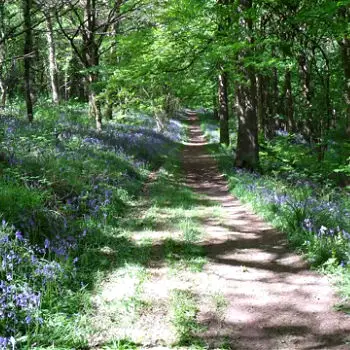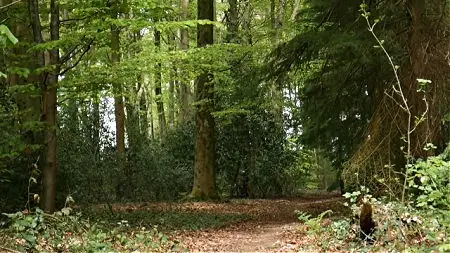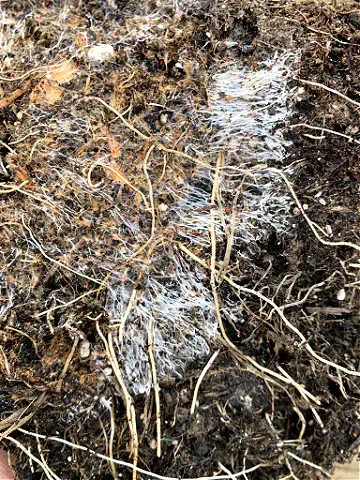What Happens When We Dig?
What happens when we dig is a commonly asked question to those extolling the virtues of no dig gardening. And it’s a fair question too. To many people who have been digging their whole lives, finding out that this practice is not only unnecessary, but downright counterproductive, can be a hard pill to swallow.
What Happens When We Dig?
The most cited reasons for digging are to improve soil structure and incorporate organic matter. When we understand a little bit about how soil works however, we know that healthy soil incorporates (and produces) its own organic matter and builds its own structure.
There are no natural ecosystems where digging takes place, and yet natural ecosystems can produce a phenomenal amount of biomass. They do this by maintaining themselves, as they have been doing for many thousands of years. They control their own pests. And produce their own food through photosynthesis and maintain soil that is suitable for the plants growing in it.
So, to examine the question of what happens when we dig, we must first look at what happens in nature, in a healthy soil system.

Healthy Soil
What is healthy soil? For many years gardeners have been taught that healthy soil consists of sand, silt, clay and organic matter. And that healthy soil is a good mix of these elements. But whilst we still understand very little about soil, modern science has taught us that soil is a lot more than this! Healthy soil is a living ecosystem.
An ecosystem is a collection of organisms interacting with one another in their environment. In the case of soil, the sand, silt and clay are the environment. And the organic comprises decomposing or digested (poop) plant matter and billions of tiny organisms (some less tiny than others).
Food webs
In school we learn about food chains. These are linear diagrams denoting in a very oversimplified fashion who eats what. They can be very varied, and as you get older, you are taught about food webs, that are much more complex and take into account the fact that most things eat and are eaten by more than just one other species!
All food chains and food webs, however, have something in common; plants. Plants are the only thing that can produce mass from thin air. They are what is known as the primary producers. Every ecosystem on the planet depends on plants in one form or another to survive. And the soil ecosystem is no exception!
Habitat Housekeeping
It’s in the interest of the organisms in an ecosystem to look after the plants. After all, the plants are their source of food. Animals eat the leaves, stems, fruits, seeds, flowers, nectar and sometimes even the bark of trees. Some plants are eaten in their entirety, but the overall effect of this grazing is that the habitat is maintained.
The reason that invasive plants can get a foothold is that they don’t have any natural grazers to keep their populations in check. Animals also pollinate and distribute seeds, ensuring the survival of future generations of plants. It’s a very elegant system that looks after itself.
When a pest or a disease comes along, it is in the interest of the other inhabitants of an ecosystem to bolster their defences and look after the health of the plants. That is why we rarely see large amounts of pest damage in natural ecosystems.

Even trees can use underground networks of fungi to communicate to one another when there is a pest about. If one tree is under attack the others can pick up the signals and increase levels of toxins in their leaves to put off the attacker. This might seem like altruism on the part of the attacked tree, but, in reality they are acting for the good of the ecosystem that is their home and will be the home of their offspring too.
Dynamic Equilibrium
A term commonly used to describe the condition of a healthy ecosystem is that of dynamic equilibrium. This refers to a state that is both in balance and resilient to change. It is dynamic in that it can cope with shifting temperatures and weather conditions, a new pest or disease, and a reasonable amount of disturbance.
Healthy ecosystems don’t exist in dynamic equilibrium and are easily pushed into turmoil by the onset of drought, or by the appearance of a new pest.
Healthy ecosystems almost always rely on high levels of biodiversity. If there are a lot of organisms in an ecosystem, and lots of variety, the system will be more resilient.
The Soil Ecosystem
Now that we know all about healthy ecosystems, we can apply this to the soil ecosystem too. Ordinarily when we think of an ecosystem, we think of places above ground like a forest, or perhaps a coral reef. So, applying the same way of thinking about these ecosystems, to the soil can be a little bit difficult. Particularly as we cannot see most of the living things within the soil.
The soil is one of the most important ecosystems on the planet. It supports almost all terrestrial life, directly or indirectly, it’s the world’s largest carbon sink, and it is responsible for filtering water and preventing flooding (amongst other things!).
Healthy garden soils are in fact one of the most biodiverse ecosystems on the planet. One handful of healthy garden soil contains billions of tiny lives; more organisms than humans who have ever lived on the planet.
Like other ecosystems, the soil wants to maintain itself and the plants living in it. It doesn’t want pests to gain a foothold, and it wants to maintain its structure.
The Soil Ecosystem Works for Our Plants
Tiny organisms moving within the soil help to aggregate the particles in the soil opening pores for plant roots to penetrate the ground. The aggregates hold water like tiny sponges and the pores contain oxygen so the plant roots can respire.
Microscopic bacteria and other organisms in the soil possess acids and enzymes to break down particles in the soil releasing locked-up nutrients on a constant basis. This means that soils with a healthy ecosystem are rarely lacking in nutrients. Most contain enough nutrients to last many thousands of years.
A network of tiny fungal hyphae spread through the soil like a web, accessing the most microscopic pockets of water and nutrients, and connecting them with the plants. These fungi act as a secondary root system, greatly benefitting the plants.

What really happens when we dig?
So with all this in mind, what really happens when we dig our soil? When we dig, we break up the carefully built and resilient soil structure. We break apart the fungal hyphae that network through our soils. We expose microbes and other life forms to sunlight which can kill them. The entire ecosystem is thrown into disarray.
It is comparable to going into a forest and chopping down all the trees. We are taking away the soil’s own ability to self-regulate and create the best environment for our plants to thrive.
What happens when we stop digging?
The good news is that the soil ecosystem is fast to grow and regenerate. Depending on the size of the area being dug it can be replenished in a matter of days (for a small hole), or a few years (for a large field).
The problem comes when we dig every year, we deplete the soil systematically. So we can choose to stop digging our soils, and watch it’s health build year on year, and relieve ourselves of the guilt we might feel from following any practices that were considered the best thing to do, until now!
Further reading
How to make compost fast at home
Mulching – grow with less effort and less watering.
- Blossom End Rot - August 9, 2022
- Tomato Blight - August 4, 2022
- Drought Resistant Flowers - August 3, 2022
